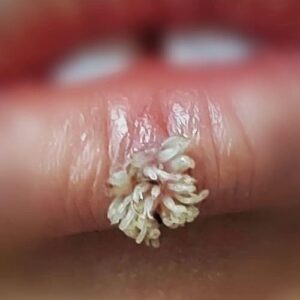Could the solution to better heart health be right on your plate? Some common kitchen staples do more than add flavor—they may support healthy blood flow and help reduce the risk of blood clots, which often form silently and can lead to serious health issues like strokes or heart attacks.
Every year, countless people experience vascular complications without noticing any warning signs. But by making thoughtful food choices, you might naturally support your circulatory system and keep your heart protected. Here are seven powerful foods you can include in your meals to help maintain smooth, healthy blood flow.
Why Blood Clot Prevention Matters
Blood is essential for transporting oxygen and nutrients throughout your body. But when clots form—known medically as thrombosis—they can disrupt this vital flow.
These clots may occur due to underlying conditions like cancer, diabetes, chronic inflammation, or simply from aging, inactivity, or smoking. The consequences can be severe, but small changes in your diet may offer a protective edge.
While medications are available to thin the blood, certain foods provide similar effects in a gentler, more natural way. Let’s explore the top contenders.

7 Natural Foods That Support Healthy Circulation
1. Turmeric: A Golden Ally
Best known for its bright yellow color and use in curries, turmeric is rich in curcumin, a compound with potent anti-inflammatory and blood-thinning properties.
Whether added to warm drinks or cooked into your meals, turmeric may help reduce clotting risks. However, if you’re taking prescribed blood thinners, consult your doctor first.
2. Garlic: A Subtle Yet Powerful Support
Used raw or cooked, garlic can help lower blood pressure and may reduce clot formation. Its natural compounds support cardiovascular health, making it a simple and effective addition to everything from dressings to stir-fries.
3. Cayenne Pepper: A Hot Circulatory Aid
This spicy chili contains salicylates—the same active ingredients in aspirin. Adding cayenne to soups, eggs, or roasted vegetables kicks your food and may help thin the blood naturally.
4. Ginger: More Than a Nausea Remedy
Well-known for soothing upset stomachs, ginger also inhibits platelet aggregation, a key process in blood clot formation. You can grate fresh ginger into meals or steep it as tea for a healthful daily boost.

5. Chinese Cinnamon: Sweet but Potent
This aromatic spice contains coumarin, a natural anticoagulant. A small amount in desserts, coffee, or oatmeal can offer benefits, but moderation is key; excessive intake may affect liver function.
6. Ginkgo Biloba: Brain and Blood Flow Support
Often taken as a supplement to enhance memory, ginkgo may also help with blood circulation by inhibiting enzymes involved in clotting. Speak with a healthcare provider before trying it, especially if you’re older or taking medications.
7. Bromelain: Pineapple’s Anti-Clotting Enzyme
Found in fresh pineapple, bromelain is an enzyme that may reduce inflammation and slow clot formation. It’s a delicious and tropical way to boost heart health without the need for supplements.

A Word of Caution
While these foods can be part of a heart-healthy diet, they’re not substitutes for medical treatment. If you’re currently on prescribed anticoagulants, talk to your doctor before making dietary changes, as natural blood thinners can interact with medications.
Final Thoughts
Eating well is a powerful act of prevention. By incorporating these seven natural ingredients into your daily meals, you’re giving your body tools to support healthy circulation and heart function. Start slowly, enjoy the flavors, and use moderation—your body will respond with gratitude.





